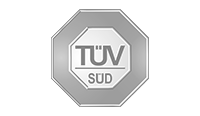Request a Demo
Trusted by leading brands, retailers, manufacturers and service providers across industries such as:
















We’ll explore some of the key impacts of COVID-19 on the supply chain, and show how the right technology can transform supply chain management in an uncertain and rapidly changing world.
COVID-19 has impacted every part of the global supply chain. According to a McKinsey report, the crisis means:
Supply chain organizations need to get on the front foot, and according to McKinsey, industry leaders are prepared to invest significantly.
“Respondents see an urgent need to get better control over supply-chain technology, using a skilled workforce trained to use new digital tools at speed and scale… …Just over half also expect permanent changes to their planning processes, such as greater centralization of planning activities, shorter planning cycles, and introducing advanced-analytics techniques.
Intriguingly, only 11 percent of respondents said that budgets were a constraint on their ambitions to make these changes, suggesting that resilience requires smart investments, not just pouring money into the supply chain.”
McKinsey, Resetting supply chains for the next normal
Let’s dig into some of these and see how you can take advantage.
Although traveling to suppliers is challenging and many in-person events are canceled, you don’t need to stop your product sourcing operations. Increasingly, you can digitally source products online through virtual showrooms. One great example is Alibaba, who put on 20 digital tradeshows during the height of the pandemic.
Interactive media and other technologies allow product category managers and their teams to virtually experience the latest products and understand consumer trends. You can drive up supply chain sourcing efficiency too—the right supply chain platform lets you:
Businesses are discovering that remote work doesn’t negatively impact how much gets done—in many cases, working from home or a remote location enhances supply chain productivity. This is a time to optimize for remote collaboration so that every employee, partner, or organization in the supply chain is working to a common goal of speed, quality, and efficiency:
Supply chain managers must ensure that suppliers and manufacturers are meeting quality standards, complying with your agreements, meeting local laws, and resolving any production issues. With COVID-19 limiting independent on-site inspections, organizations can take advantage of self-assessments and audits. Supply chain platforms can help you achieve this through several methods:
Streamlining processes, maximizing productivity, and focusing on efficiency – all help to build resilience and agility into the supply chain. At the same time, pressure on profit margins means you need to drive down costs and do more with less. Supply chain platforms can help you get control of your expenses:
While it’s true that COVID-19 has compounded supply chain issues, the investments you make and the solutions you put in place now will last well beyond our current crisis. The pandemic exposes all of the flaws, so it’s an ideal time to understand just what is, and isn’t working—and to build resilience, speed, and responsiveness into your supply chain. A combination of digital transformation and agile software platforms let you tailor the technology to your operations, and drive improvements throughout.
Step forward into a world of data-driven decision making, transparency, risk management, and cost control to ensure you can manage any crisis and continue to thrive.
Topo is a whole new breed of supply chain management software. It is a powerful collaboration, automation, and analytics platform connecting all sourcing, quality, compliance, and sustainability stakeholders. You can collaborate with all members of your in-house team, manufacturers, and service providers throughout your supply chain.